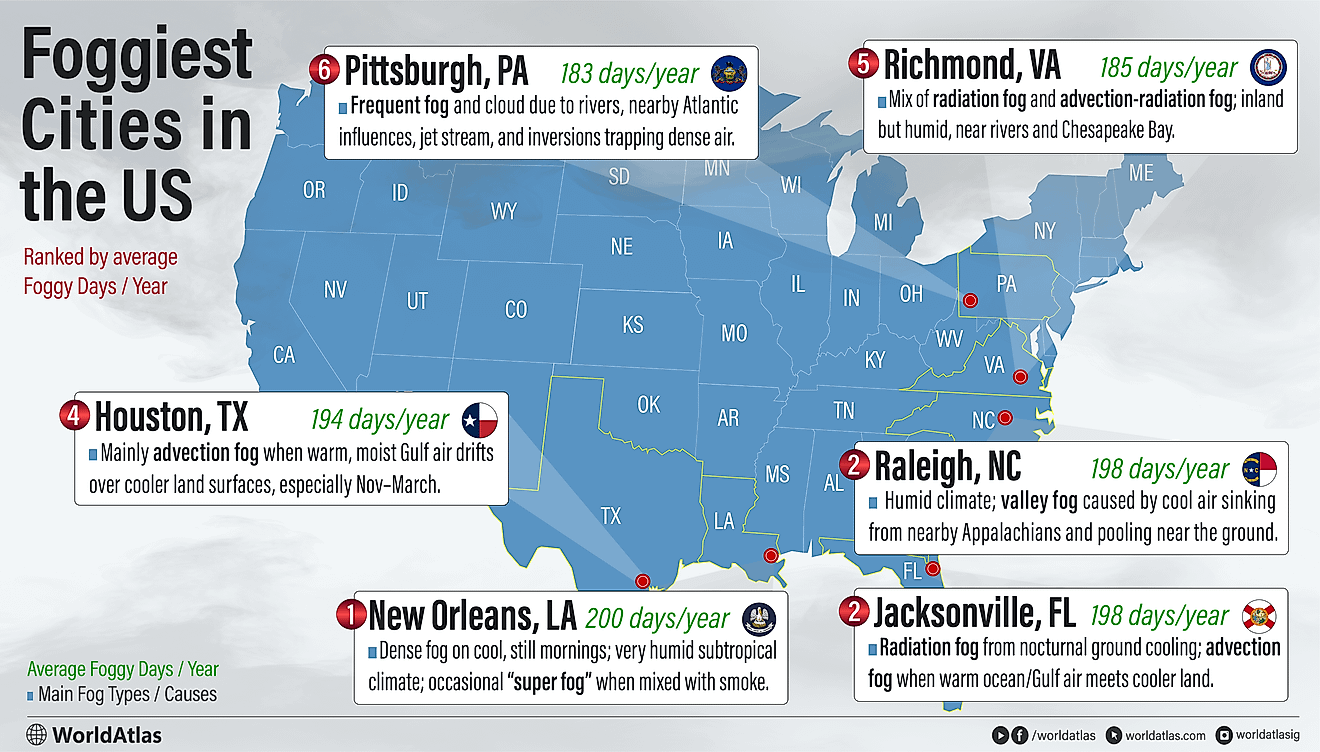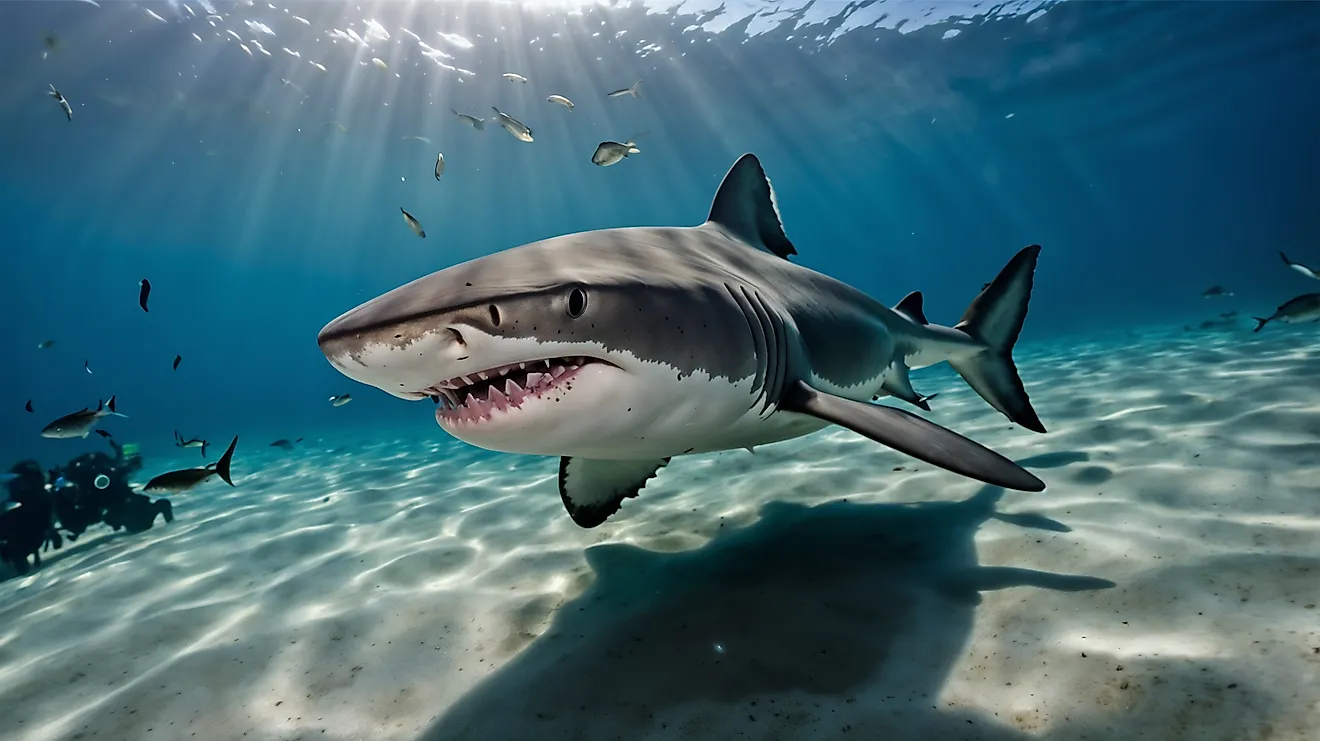
Are There Cobras In The Everglades?
The Florida Everglades is a remarkable and delicate ecosystem. At 1.5 million acres, it is the largest subtropical wilderness in the United States. In addition to being a national park, the Everglades is also a UNESCO World Heritage Site, an International Biosphere Reserve, and a Wetland of International Importance. This undeveloped, mixed-terrain habitat in southern Florida is home to many native species of flora and fauna, including such endangered gems as the manatee, Florida panther, and American crocodile. Unfortunately, the Everglades have also made headlines in recent years due to their increasingly desperate situation involving invasive snakes. A large population of Burmese pythons continues to breed at an uncontrollable rate, and there is even evidence that anacondas have found their way into the Everglades. Is it possible that cobras have now illegally entered the ring? If so, how did they get there? And what is being done about it?
Introducing the Cobra
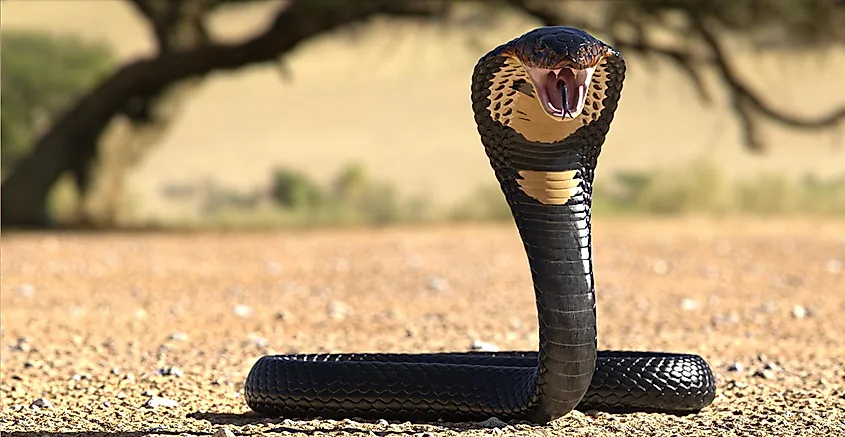
Black cobra with a yellow neck, mouth open, standing in the desert.
Cobras are venomous snakes belonging to the Elapidae family. There are approximately 30 species - varying in color (anything from yellowish/white to dark brown to black), size (generally about 3 to 7 feet, but upwards of 18.5 feet), and behavioral characteristics (some are more aggressive than others, and many varieties can even "spit" as a defense mechanism). Some of the more standout and universal characteristics include the hood (i.e., specialized ribs and muscles that flare out from the upper neck when threatened), the deep, almost growl-like hiss, and the ability to raise off the ground, thereby "standing" to face its attacker. In the case of the king cobra (the longest venomous snake in the world), it can hold itself at eye level with a grown man.
Cobras are native to Africa, the Middle East, India, and south/southeast Asia and generally prefer habitats such as savannas, open woodlands and rainforests, plains, and rocky hillsides. They are active at dusk and dawn, using their forked tongue to sniff out prey, which they will then strike at using their short, neurotoxin-injecting fangs. Small mammals, birds, amphibians, other snakes, and eggs are all on the menu. But thanks to their slow metabolism, cobras can go days, weeks, and even months without eating. It all depends on the size of their previous meal.
While all cobras lay eggs (about 12 to 60 at a time, depending on the species) and defend them fiercely, king cobras (Ophiophagus hannah) are the only snakes that build nests. Cobras reach maturity between the ages of 4 and 6 and can live anywhere from 20 to 30 years in the wild.
Though cobras may look and sound intimidating, they assume such postures because they are scared, not because they like being aggressive towards humans. Like most venomous snakes, they are shy and do their best to avoid conflict. With that said, bites do occur, and if left untreated, they can certainly be fatal (as a result of respiratory and cardiac arrest). Most victims live in lower-income, agricultural areas where rats are abundant and sleeping quarters are less secure. On the other hand, humans have proven to be quite dangerous for cobras. Habitat destruction, active hunting for medicine, food, and fashion, as well as fear-based killings, and the international exotic pet trade all threaten the livelihood of these snakes.
The Exotic Pet Industry
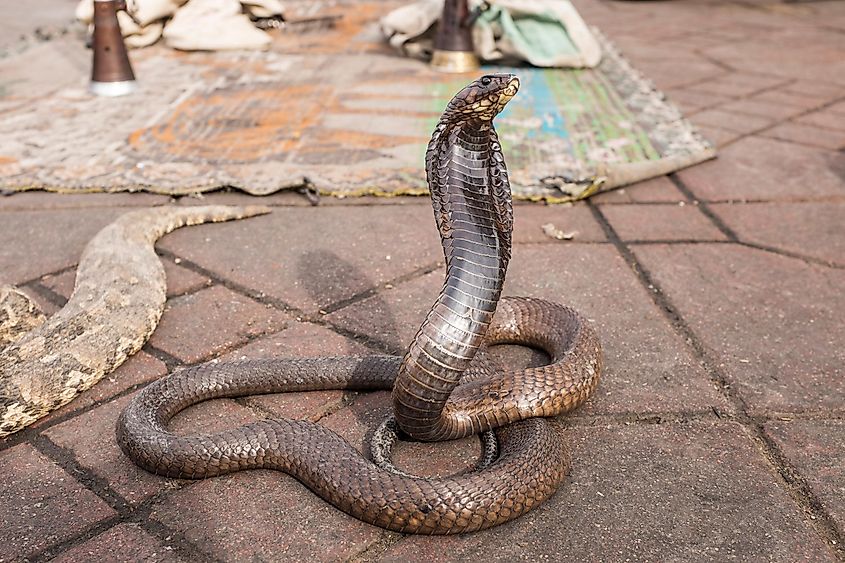
Snake Charmer's cobra is on Jemaa El Fna in Marrakech, Morocco.
Reptiles and amphibians, along with certain species of birds and fish, are considered "exotic" in the pet trade business. Globally, the exotic pet industry is worth billions of dollars - and the United States is a big player (or rather, a big buyer), with Florida leading the charge. For decades, this was a largely unregulated phenomenon, but in the wake of the invasive python problem, Floridians are no longer allowed to own exotic constrictor snakes. Furthermore, because of some high-profile venomous snake escapes (more on that later), the process for issuing those permits has become more stringent. For instance, in order to obtain the license necessary to possess a venomous reptile, an applicant must demonstrate at least 1,000 hours of experience working with the species in question and be able to keep the animal in an escape-proof room.
At the same time that adjustments are being made to legal exotic pet ownership, authorities have also taken steps to crack down on the black market. Last year, the FWC concluded a multi-year investigation informally called "Operation Viper" by issuing charges against eight people who were illegally trafficking snakes. Undercover agents purchased or sold 200 snakes represented by 24 species from 7 different regions - giving a snapshot into the daunting scope of the problem.
Despite stricter measures as of late, between 2016 and 2022, 220 escaped animals were still reported to Florida wildlife officials. And given the black market and those who may have purchased their animals legally, only to illegally release them (something that often happens when the animals become too much to handle), it is safe to say that many more go unreported. The exotic pet trade, therefore, is the primary culprit when it comes to invasive species in the Sunshine State. So far, it is the giant, non-venomous snakes that have established themselves in the Everglades, but as we will see, cobras have also sprung loose in the same vicinity.
Reports of Cobras in Southern Florida
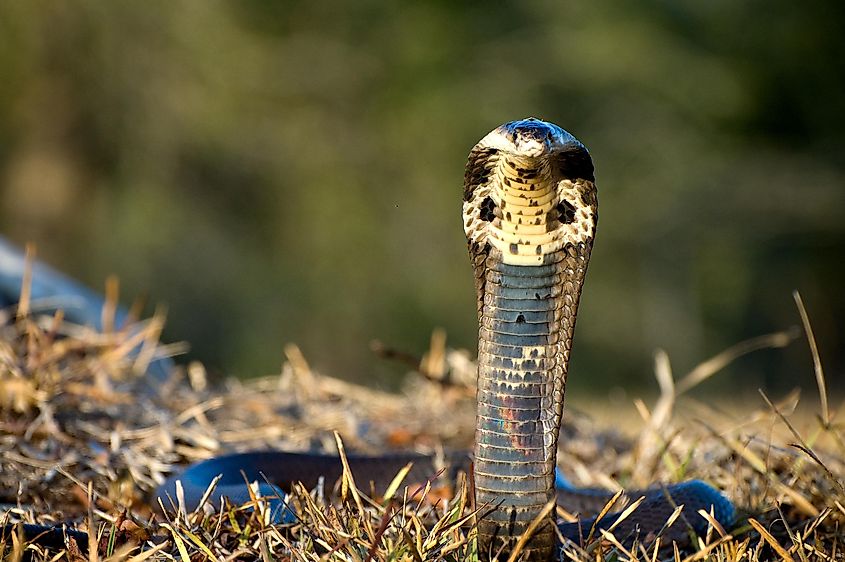
Whether it stems from legal or illegal possession or intentional versus accidental release, various types of cobras do occasionally slither amok in southern Florida. Though these reports do not pertain to the Everglades, they did take place in proximal regions. Here are a couple of examples of the cobra-related chaos Floridians sometimes encounter.
In September of 2015, Orlando-based exotic animal dealer and TV personality (star of the show Airplane Repo on the Discovery Channel) Mike Kennedy reported that his 8-foot-long king cobra, Elvis, had escaped. Just over a month later, a woman discovered Elvis underneath the dryer in her garage, hissing repeatedly. Orange County Animal Services safely apprehended the frightened and hungry cobra (note: Elvis was bred in captivity and therefore lacked necessary hunting skills). Meanwhile, Kennedy, who owned the proper permit, had to pony up $4,000 to the Florida Fish and Wildlife Conservation Commission as part of a plea deal.
Only a month after Elvis was captured, another cobra, this time a 5-foot Asian monocled cobra (known for the distinctive eye design on the back of its hood), was tracked down by the FWC a little over 24 hours after it escaped its enclosure.
These back-to-back incidents led to an initiative called "Operation Slither," in which the Captive Wildlife Section of the FWC reviewed all venomous reptile licensees (at that time, there were 280 statewide). The end result was two citations and 71 warnings issued for a combination of licensing, caging, and administrative issues.
Signing Off
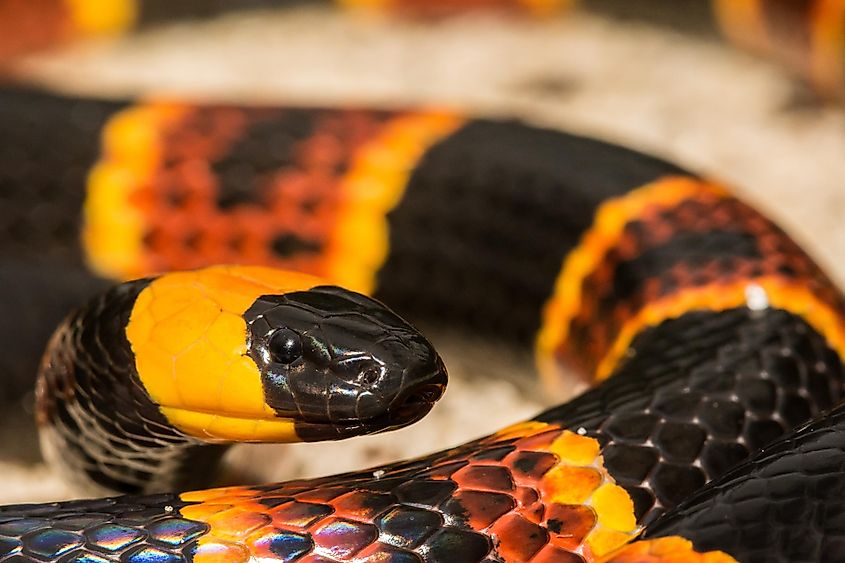
There is no evidence to suggest that cobras have established breeding populations in the Florida Everglades. So far, cases of these daunting serpents in southern Florida have been the result of escaped pets. With that said, there is one species of snake that is native to the Everglades and is related to the cobra. The Eastern coral snake (Micrurus fulvius), aka the Harlequin coral snake, may not look like a cobra (it is short, slender, and has black, yellow, and red bands), but it is a venomous member of the Elapidae family, nonetheless.
While there may not be a cobra epidemic at the moment, it is conceivable that these powerful animals could one day follow a trajectory similar to that of the Burmese python. So, if you happen to see one in the wild (or any plant or animal that looks out of place), do not approach it, but rather, call 1-888-IveGot1 or use the new IveGot1 app to report it to the proper authorities.










